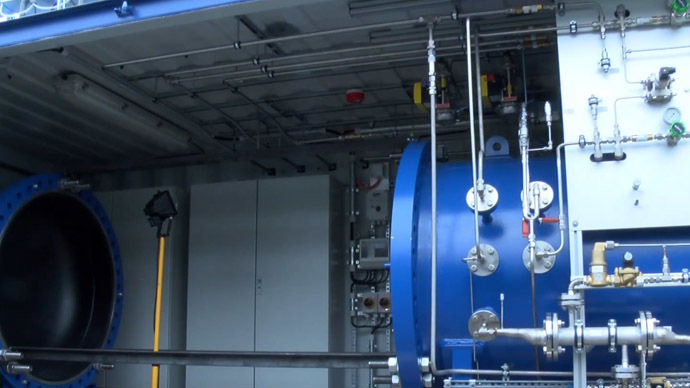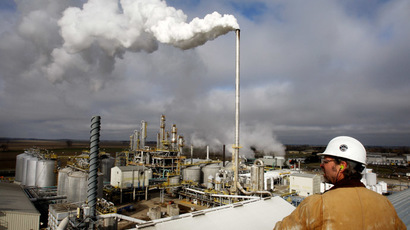German-made ‘miracle’ machine turns water into gasoline

There is as yet no method to mimic Jesus Christ and turn water into wine, but German chemical engineers have proved they can perform miracles of alchemy. They are now finalizing the assembly of a rig that changes water into gasoline.
The German company says it has developed an engineering installation capable of synthesizing petroleum-based fuels from water and carbon dioxide. The ‘power-to-liquid’ rig converts gases extracted from water into liquid hydrocarbon fuels.
“I would call it a miracle because it completely changes the way we are producing fuels for cars, planes and also the chemical industry,” Nils Aldag, Chief Financial Officer and co-founder of Sunfire GmbH told RT’s Ruptly video agency.
The Dresden-based company expects the technology to have a big impact on the future fuel market.
The electrically-powered installation uses a process known as Fischer-Tropsch Synthesis, first developed by German chemists Franz Fischer and Hans Tropsch in 1925.
The Fischer-Tropsch (F-T) reaction converts colorless, odorless, incombustible carbon dioxide gas (CO2) extracted from water, and hydrogen gas generated from water vapor, by electrolysis into liquid fuels such as diesel, jet kerosene and other chemical products.
The conversion process takes place in a series of reactors at
temperatures between 150 and 300 degrees Celsius.
However, the F-T fuel technology “will always be more
expensive” than getting conventional liquid hydrocarbon
fuels from oil or coal, Aldag warned.
“What is important is that the value creation happens at the place where you use the fuel,” he said. So there will be no crude oil transportation costs and expensive infrastructure. “You are producing the fuel right where you are actually going to use it,” Aldag stressed.
One might think that much cheaper conventional fuels will always be a sure bet, but this depends on the given conditions. The Pentagon has already been working in this direction.
The US military has spent up to $150 per gallon on alternative jet fuels made from algae, which is a good bit more than the approximately $3 per gallon that traditional jet fuels currently cost in the US.
Although $150 seems a lot for a gallon of gas, the US has spent a
fortune on fuel during its 13-year campaign in Afghanistan. The
military themselves estimate that the cost of delivering fuel to
remote bases is
$400 a gallon.
Sunfire believes the technology will be refined, and after
obtaining regulatory permission they hope to offer it for
commercial exploitation by 2016.
While Nils Aldag considers the technology has a bright future, the will to use it needs to gain momentum.
“I think in a very long time it will actually have an impact on geopolitics. What you always have to know is that the quantities that are required in these industries are so big that it would be difficult for such a technology to make a significant impact in a short period of time,” said Aldag.














